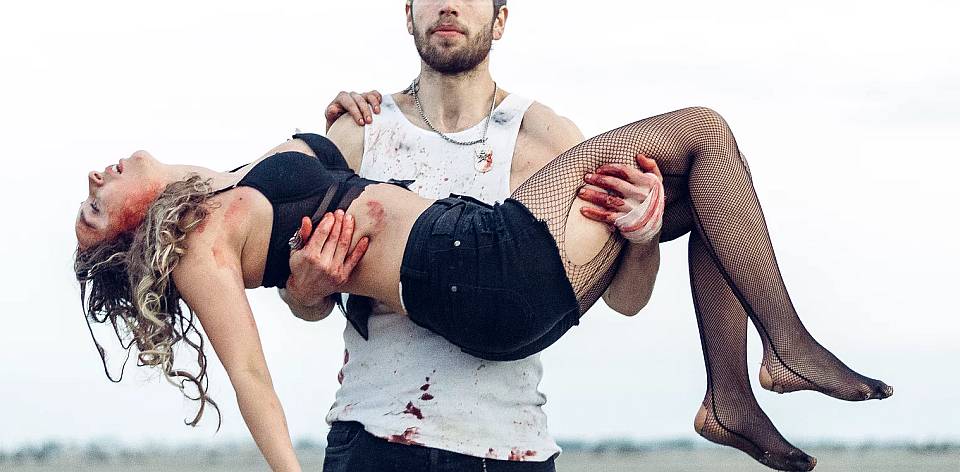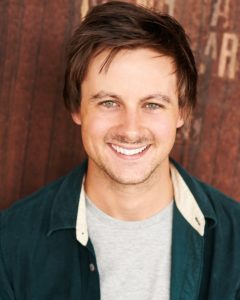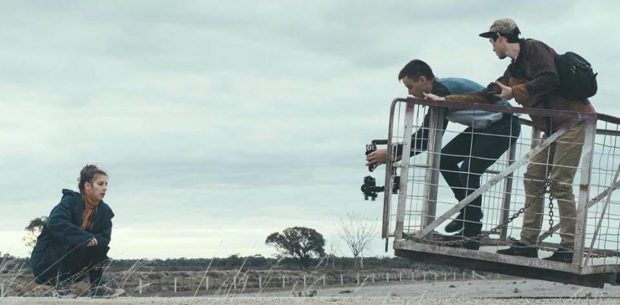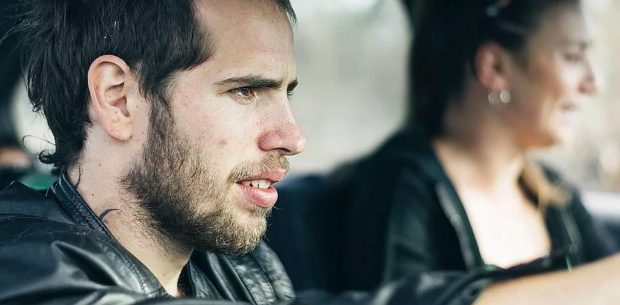WATCH THE SUNSET, a new Australian film from directors Tristan Barr and Michael Gosden, is debuting at the Revelation Perth International Film Festival this week. It’s set inside a group of ice addicts and criminals. It’s also shot in one take.
Focusing on an outlaw bikie gang member, audiences are dragged into the tale by the filmmaker’s real-time approach. We chatted with producer/cinematographer Damien Lipp about the process of shooting a film in a single session.
“We started about 4:20 in the afternoon, as the sun was in a perfect spot,” explains Lipp, “and I think it was 83 minutes after that the sun was setting.” Shot on location in the country town of Kerang in Victoria, it tells the the story of Danny (played by director Barr), an ex-con racing against the clock with his terrified family. “It was in the timeline of an afternoon, so there was no breaks,” he adds. “The audience had to come along for the ride, no matter what.”
From an early stage in its development, the filmmakers always wanted to play with the concept of time. “One of the scenes out of True Detective…really captivated us. We hadn’t seen Victoria….the German film. At the beginning, WATCH THE SUNSET started with a long scene. It was an idea that Tristan had,”elaborates Lipp. “Cut the film with six or seven long takes. At the end of the day, I thought we could get away with doing it in one shot, and follow different characters’ stories throughout that one shot.”
Sitting behind the seamless narrative are about 85 people and five weeks of rehearsal, and a cast and crew who already had a relationship. “We went up with our family and shot a film. Everybody knew everybody…The extras, the choir and everything like that was all set-up. We had lots of classrooms donate their time, we had the choir from Kerang donate their time, the people from the motel.” Even with the preparation, the first time the film played out in real time was on the day of production. “It wasn’t until the very first day of shooting that we’d actually shoot the film in one continuous shot.”
“Every cog just needs to be spinning right, and if one’s missing or one’s out of place, then it falls to pieces,” Lipp continues. “It was like we filmed a theatre play really. Letting the actors work in the environment, it was a real day, the town was really going. We were shooting, there were cars in front of us as we were driving that were slower than us, there were police around. It was actually an exhilarating shoot.”
The method of production allowed the filmmakers flexibility, but also came with some limitations. “We had to shoot with a DSLR and a smaller gimbal, because we couldn’t fit the bigger gimbal system through the car door,” says Lipp.
Looking ahead, BarrLipp Productions are giving themselves very little rest between features. “We fly out of Perth on Friday, then we drive to Queensland for the next film. We’re shooting it on Sunday [23 July 2017]. The next film we’re shooting is called ONE, where the population of Earth is one. There’s only one human being left, we’ve all been eradicated.”
“It’s not going to be a one-take film,” Lipp hastens to add. “It’s going to be a very stylised film with long takes. One of the things we’re trying to do is make Australian cinema different to the Australian cinema that we’ve seen before. Trying to make it different, give people something that they haven’t seen before.”
If some of those people are inspired by what they see, Lipp’s advice is simple: “Just get out there, pick a camera up, and make a film. It is possible to do anything.”
Supported by Film Victoria, WATCH THE SUNSET plans a theatrical run following the festival screenings, including the Brisbane International Film Festival and some Sydney showings. It makes its world debut at Revelation Film Festival on 11 July 2017.







